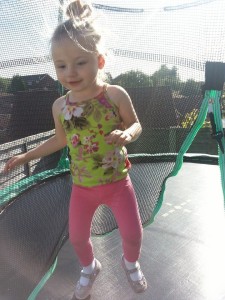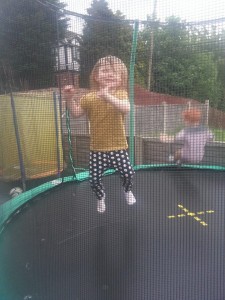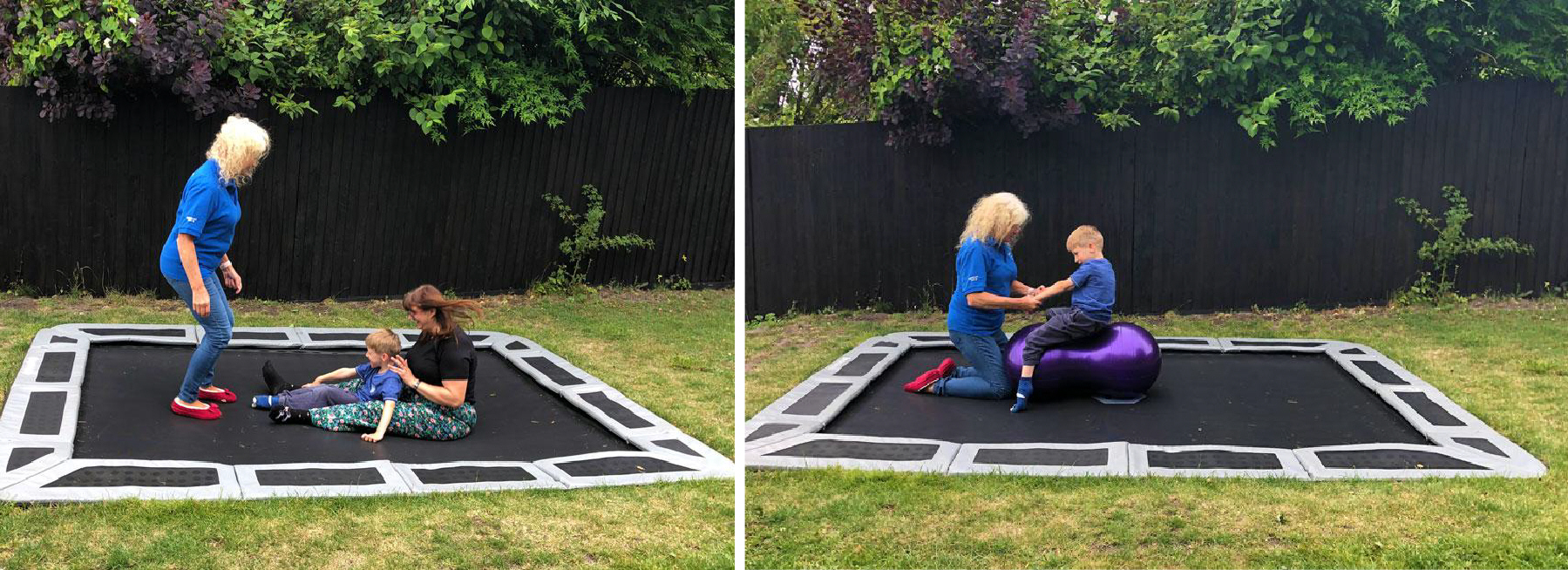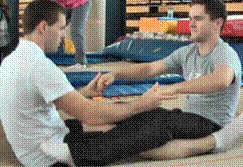REBOUND THERAPY IS one of the most popular activities for children with special needs in UK SEN schools. It is also a very popular activity for people with disabilities of virtually all kinds and for all ages.
SCARLETT
Rebound Therapy, and How is it Helping my Daughter Scarlett?
I HAD NOT heard of this therapy until it was introduced to
myself and Scarlett through her new school The Seashell Trust. The therapy is part of Scarlett's
curriculum and she is a very big fan. During a daily visit to the school we were greeted by
Scarlett’s therapy teacher Ben, Scarlett immediately flung her arms around Ben and started to
request 'ickle ickle queen' which is Scarlett talk for TRAMPOLINE!
THIS EXISTING LOVE combined with learning potential makes this
a great way for Scarlett to develop. Here is what Ben had to say about Scarlett and her Rebound
Therapy journey so far!


"SCARLETT REALLY ENJOYS her Rebound Therapy sessions smiling
and laughing throughout the session with occasional looks of surprise followed by giggles when
we introduce something unexpected and new.
AS WELL AS having fun the rebound sessions are a fantastic way
for Scarlett to develop self-awareness, self-confidence and communication skills. Through
engaging in challenging activities Scarlett is developing her ability to cope with and make
sense of new experiences alongside the development of sensory processing strategies.
THE TRAMPOLINE IS an excellent medium to explore sensations
and Scarlett's responses to vestibular and proprioceptive input. Scarlett has moved from needing
lots of support and when encountering new experiences on the trampoline, to actively seeking new
ways to have fun.
IT IS HOPED that Scarlett's new found confidence will support
exploration in new and exciting challenges in her daily life and develop her own strategies to
regulate her sensory needs."



